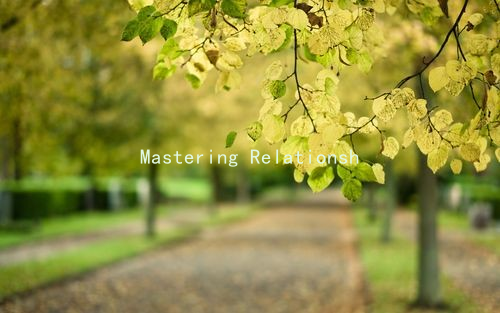Understanding Emotional Attachment: The Key to Lasting Relationships
Understanding Emotional Attachment: The Key to Lasting Relationships
Emotional attachment is a critical component of any successful relationship. It forms the emotional bond that keeps partners connected, fostering intimacy, trust, and understanding. To nurture and strengthen this bond, couples need to understand the nature of emotional attachment and practice effective communication skills. In this article, we will explore the principles of emotional attachment, its types, and practical communication strategies that can enhance relationships.
At the heart of emotional attachment are the feelings of security and belonging that partners provide each other. There are several types of attachment styles that influence how individuals connect with their partners. According to attachment theory, these styles can be categorized as secure, anxious, avoidant, and disorganized. Understanding where you and your partner fall on this spectrum can offer insights into your behaviors and preferences within the relationship.
Secure attachment is characterized by trust and comfort in emotional expression. Individuals with this style are typically good communicators, openly sharing their thoughts and feelings while being receptive to their partner’s needs. On the other hand, anxious attachment often leads to clinginess and a fear of abandonment, causing individuals to seek constant reassurance from their partners. Avoidant attachment, in contrast, may result in emotional distance and resistance to intimacy, leaving partners feeling disconnected.
One of the first steps in nurturing emotional attachment is open and honest communication. Couples should create a safe space to express their emotions, needs, and concerns without fear of judgment. Active listening is essential in this process; it involves truly hearing and understanding what your partner is saying. Reflective listening can further enhance this process, where you paraphrase what your partner has expressed to ensure clarity and demonstrate empathy.

Additionally, vulnerability plays a significant role in emotional attachment. Being open about one’s fears, dreams, and insecurities fosters deeper connections. Sharing personal stories can help to reinforce the emotional bond, as it demonstrates trust and invites reciprocity. It’s important to remember that vulnerability should be reciprocated; thus, creating an environment where both partners feel safe to share is vital for deepening emotional attachment.
Moreover, couples should prioritize quality time together. Engaging in activities that both partners enjoy helps to create shared experiences and memories. Whether it’s cooking a meal together, going for a walk, or simply sharing a quiet moment, these interactions are invaluable for strengthening emotional bonds. Additionally, regularly expressing appreciation and affection can solidify feelings of love and security, reinforcing the connection between partners.
Conflict is an inevitable part of any relationship, but how couples handle disagreements can significantly impact emotional attachment. Approaching conflicts with a mindset of collaboration rather than competition is essential. Focus on “we” rather than “me” to foster a sense of team spirit. Using “I” statements to express feelings—such as I feel hurt when… instead of You always…”—can prevent blame and defensiveness, allowing for a more productive conversation.
In conclusion, understanding and nurturing emotional attachment is crucial for building and maintaining lasting relationships. By recognizing attachment styles, practicing open communication, and fostering vulnerability, couples can forge a deeper connection. Prioritizing quality time and cooperating during conflicts will only further solidify this bond. With these tools, partners can create a loving and resilient relationship that stands the test of time.





